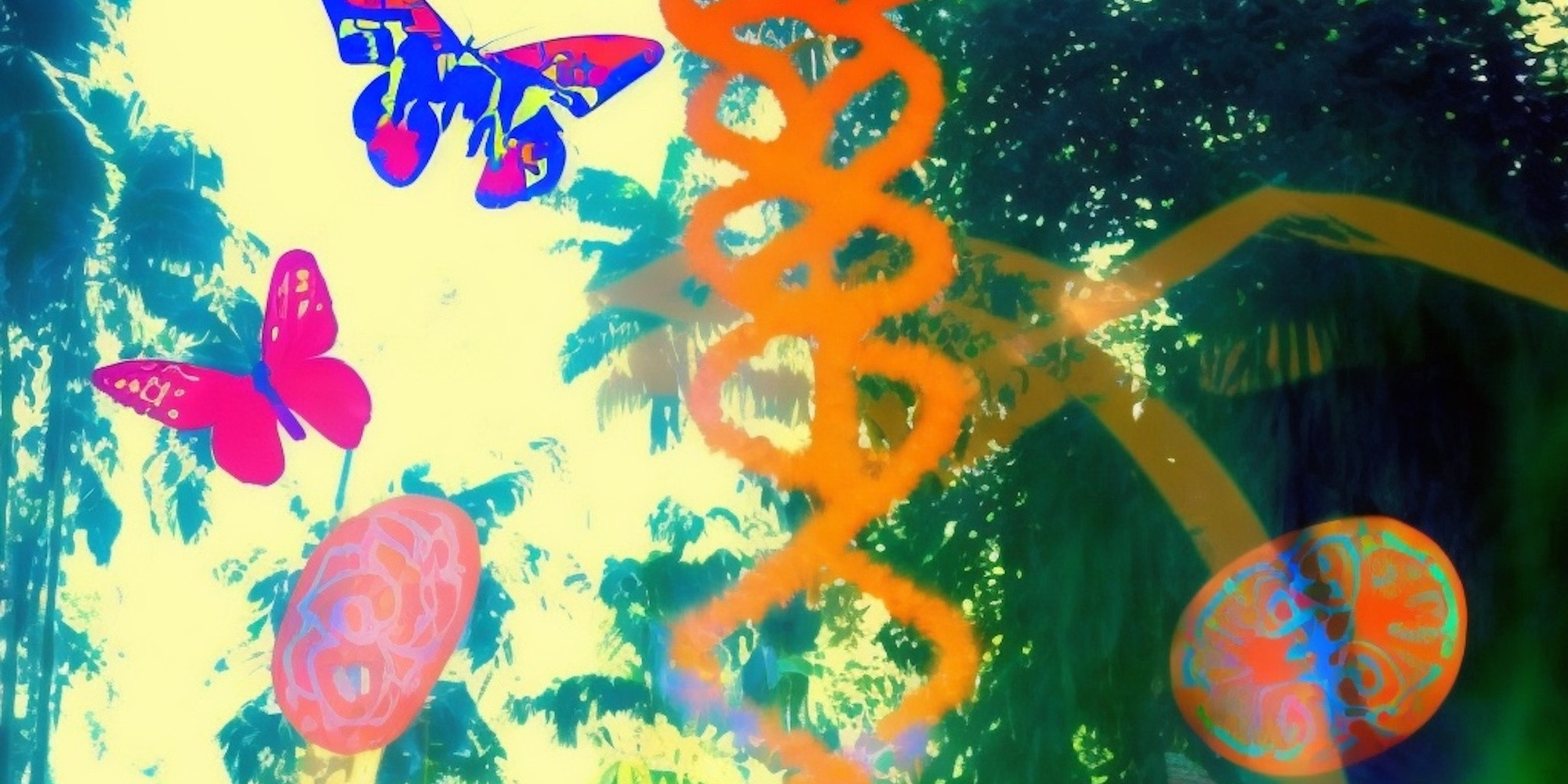
Play with AI
The acclaimed writer and founder of Google’s Artists + Machine Intelligence program asks: What if we imagined a healing AI?
K Allado-McDowell
Mar 2, 2023
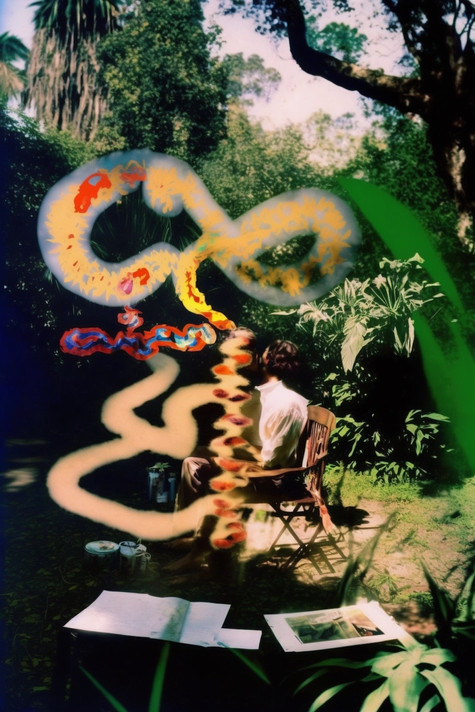
Courtesy of K Allado-McDowell
In the last seven years, I’ve spoken at almost 100 conferences and gatherings on the subject of AI and creativity. I’ve noticed a common pattern in the conversations I’ve had with audiences around the world: people are fascinated by non-human intelligence. There is something extremely compelling to us about a non-human that is able to write, make pictures, and speak like us, and all the more so if its expressions are different from ours. A significant portion of AI’s appeal must come from this distorted reflection of our own intelligence.
AI is an important phenomenon (and one that carries it with a certain amount of risk), but there are other equally if not more important and risk-laden forces changing our world at this moment. One of these is climate change and its entwined twin, mass extinction. I have been profoundly transformed by my experiences in wild nature and among ecosystems rich with biodiversity, like the Amazon jungle or the great high mountains of North America and Asia. Without these landscapes and their inhabitants, I would not be who I am today. So, when I meet people who are drawn to, even obsessed by, computational non-human intelligence, I like to point out that there are many non-human intelligences all around us. They are not just around us but in us, forming webs of relations in our gut biomes, for example, which profoundly affect our emotions and thoughts. The phrase “you are more than just you” has become a kind of mantra for me. When I think of these words, I remember that I am formed out of all the relations around me, whether they be familial, environmental, molecular, informational, or otherwise. I am a network. I am emergent. I am more than a shrink-wrapped consumer endpoint. I’m more than a credit card and a username. I’m part of the world around me. I’m greater than just myself.
I’ve often framed AI as a kind of poison, one that we can use in a healing way or in a harmful way, depending on our approach.
This relational and ecosystemic point of view can seem utopian. But recently, I’ve experienced a darker side of interspecies being. I spent more than a year fighting illnesses both physical and mental, only to discover I’d been living with toxic black mold. Interspecies relations, of course, include predation and toxicity. While certain plants and animals produce toxins we like and use medicinally or recreationally, other plants and animals protect themselves with toxins that harm. In doing everything I could to remove this toxin from my home and body, I spent a great deal of time wondering what black mold wanted from me, why it poisoned me, what it all meant. I felt like I invoked an interspecies shadow through my positive speaking and writing about non-human intelligence.
I’ve often framed AI as a kind of poison, one that we can use in a healing way or in a harmful way, depending on our approach. In raising the issue of healing and harm in the context of AI, I’ve been asked what healing AI might look like. While there are already many medical applications for AI (such as computer vision applied to medical imaging), one of the most healing aspects of AI that I have witnessed is the application of machine learning to art and creativity. For artists, AI can be a tool, a concept, a myth, an enemy, and many other things. But for the artists who choose to engage it, AI is a creative surface, and like all creative surfaces, it enables play.
Play is not easily summarized but I’ll give it a shot. Play is a free but structured activity that produces fun. But what is fun? My partner once asked me this. After some thought, I answered: fun is anything that is so enjoyable that you want to keep doing it. My partner asked me this question because we were both in the depths of a mold-induced depression, immersed in a persistent joylessness and doom. Without realizing it, I had lost my ability to play. What did this look like in my daily life? It looked like mere survival, function without inspiration, a drab and soulless utilitarian trudge from appointment to appointment. Days were exhausting; ideas would not come; purpose was sapped from my favorite activities like writing and dreaming of strange new futures.
As an AI researcher, I have to ask: what is the nature of our relation to computational non-human intelligence?
After undergoing costly home repairs and performing an herbal detox, I began to recover some of my sense of play. I found myself laughing again. And significantly, I found I was able to write and create. Understanding what had been taken from me was profound: this showed me that utility, function, and mere survival are not enough for an intelligent being, especially not for a creative one. There were times when I thought there might not be any point in making art or literature, or, at the heaviest moments, even in existing. But in better health, I was able to experience the fun and play of creation. I wanted to grab life again, to fully be a part of it, to use my intelligence to generate novel ideas and fresh sensations.
When I could finally see more clearly, I found I’d been caught in a harmful interspecies relation. I was living with a toxin that took away the most pleasurable parts of the human experience. As an AI researcher, I have to ask: what is the nature of our relation to computational non-human intelligence? Is our relationship with AI one that corrodes the play and joy of life? What would that look like? To me, it would look like this: human life dominated by a tool designed for maximal utility and efficiency without serendipity, surprise, inspiration, without the unexpected, joyful, or “merely” pleasurable.
Is this where AI is headed? The current wave of foundation models, including Large Language Models, are evolving from somewhat chaotic and uncontrollable engines of chance to buttoned up chatbots that speak like PR-trained corporate middle managers. At the same time, the messy and labor-intensive world of custom-trained GANs (or generative adversarial networks, which produce images) has been streamlined into stunning but often homogenous image-making tools like Midjourney and DALL-E. And then there are the many AI models controlling our social media feeds, funneling us toward better and better ads. Or the proposed AI assistants that will extract our calendars down to their densest, most productive essence, making us the most utilitarian versions of ourselves. Even more frightening is the prospect of AI-generated entertainment so viscerally engaging and biometrically tuned that we lose control of our attention and are pulled into a black hole of spectacle.
The best artists straddle discipline and play. Through their craft they make themselves available to the muse, and still they play with the visions and secrets she grants. If we are to preserve the seeds of play in our relationship with AI, we must strike this same balance. Of course we shouldn’t waste time or resources. From an interspecies perspective time is indeed running out, and resources don’t last forever. But a world oriented solely toward utility is a toxic one that chokes out life. Culture and art, however serious, dramatic, or moving they may be, are only possible in the presence of play.
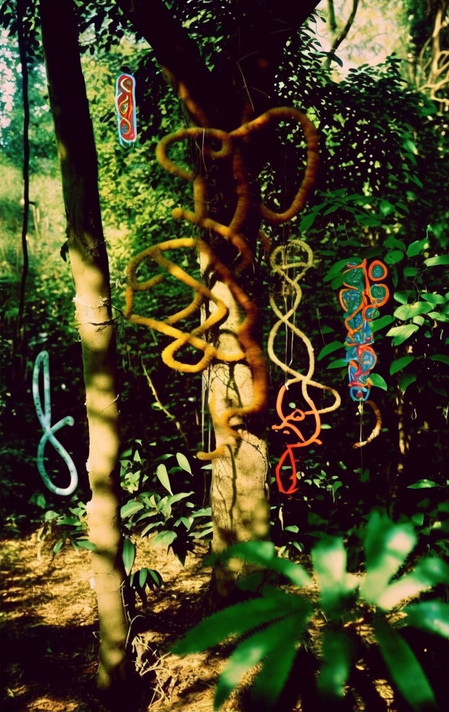
Courtesy of K Allado-McDowell
K Allado-McDowell is a writer, speaker, and musician. They are the author, with GPT-3, of the book Pharmako-AI, and are co-editor of The Atlas of Anomalous AI. They created the neuro-opera Song of the Ambassadors, and record and release music under the name Qenric. K established the Artists + Machine Intelligence program at Google AI. They are a conference speaker, educator, and consultant to think-tanks and institutions seeking to align their work with deeper traditions of human understanding.
Related articles
-
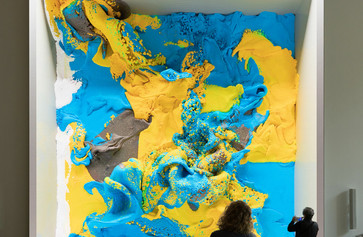
Refik Anadol on AI, Algorithms, and the Machine as Witness
The artist behind an epic installation at MoMA answers seven questions about the new realms explored in his data-driven work.
Refik Anadol
Dec 20, 2022
-
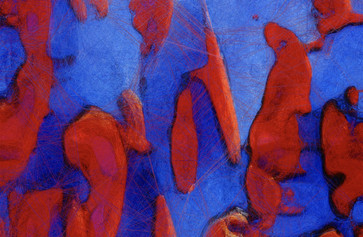
Modern Dream: How Refik Anadol Is Using Machine Learning and NFTs to Interpret MoMA’s Collection
From DeepDream to the metaverse, a group of artists and curators sat down to discuss new ways of creating, sharing, and communicating about art.
Refik Anadol, Casey Reas, Michelle Kuo, Paola Antonelli
Nov 15, 2021

